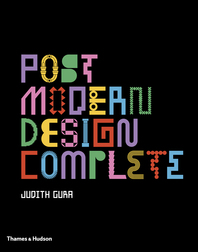For a few years in the 1980s, Michael Graves was Frank Gehry, Bjarke Ingels, and Zaha Hadid rolled into one: the biggest architectural celebrity of the day, a man whose work appeared to bridge the chasm that so often separates the architecture that excites the public from the architecture that is taken seriously by critics and scholars. Some of it was the drama of conversion: after a debut as one of the neo-Corbusian “Five Architects” in the early ’70s, he turned away from the approach of his confreres Peter Eisenman, Charles Gwathmey, Richard Meier, and John Hejduk and dove fully into the history-churned waters of post-modernism. He talked a lot about using classical form to make architecture understandable, but his style was less purely traditional than it was a highly personal mix of classicism and cubism. He was more interested in composition than in space, more attuned to color than to shape and proportion. Whatever you thought about Graves, there was no denying that he was an original voice in American architecture, and that structures like his Portland Building of 1982, his far superior Humana Building of 1985 and Denver Central Library of 1991, and his compelling, if mannered, interiors, tapped into a widely felt desire for an architecture that at once connected to tradition and felt exciting and new.
And so it was, until it wasn’t. Graves’s star fell relatively quickly as postmodernism faded, with some of its adherents, like Robert A. M. Stern, moving toward a more literal form of historicism. Graves stayed the course, and his architecture was remarkably consistent throughout his career. What defined his middle years was not so much the buildings he produced—decent but unexciting—as the product design, a second career he developed, first for Alessi and then, most famously, for Target. And then there was Graves’s final chapter, after a tragic infection to the spinal cord left him paralyzed from the chest down. He, heroically, continued to work from his wheelchair, generating not only the exquisite drawings he was known for—drawings that were often more beautiful than the buildings they represented—but also embarking on yet another subcareer as he produced furniture and surgical products aimed specifically at the disabled. The artist/architect/designer ended his professional life as an activist for this latter audience.
His was a career made up of equal parts exhilaration and frustration, and it is perplexing to sum up. Ian Volner has worked conscientiously to do so in Michael Graves: Design for Life, the first biography of the architect, who died in 2015 at the age of 80. (Volner began the book with Graves’s cooperation, but finished after the architect’s death.) Volner is a sympathetic chronicler, and he is at his best when he recounts Graves’s early years as a young architect—when he once tricked his first wife into thinking he was taking her to a beach on the shore of Lake Michigan but was really on his way to see Frank Lloyd Wright’s Johnson Wax headquarters in Racine, Wisconsin. We get a picture of a man who was passionate, single-minded, ambitious, and work-obsessed, and at the same time could be thoughtful, charming, sardonic, and gentle. Volner shows us a Graves whose greatest joy was in working alone, making sketches and watercolors, and who at the same time would go to great lengths to exploit his celebrity. He craved the respect of the academy—he taught at Princeton for decades—and yet he mocked it constantly for being out of touch with the interests of ordinary people. He was devastated when the Whitney Museum, his most prestigious client, abandoned him after a third try at redesigning an aggressive expansion of the Whitney’s Marcel Breuer building won no more praise than his two previous versions. He produced many fine buildings, but arguably no truly great ones. Was Graves the most populist of elitists, or the most elitist of populists? I suspect that no one, including Ian Volner, can ever fully answer that.





Post a comment to this article
Report Abusive Comment